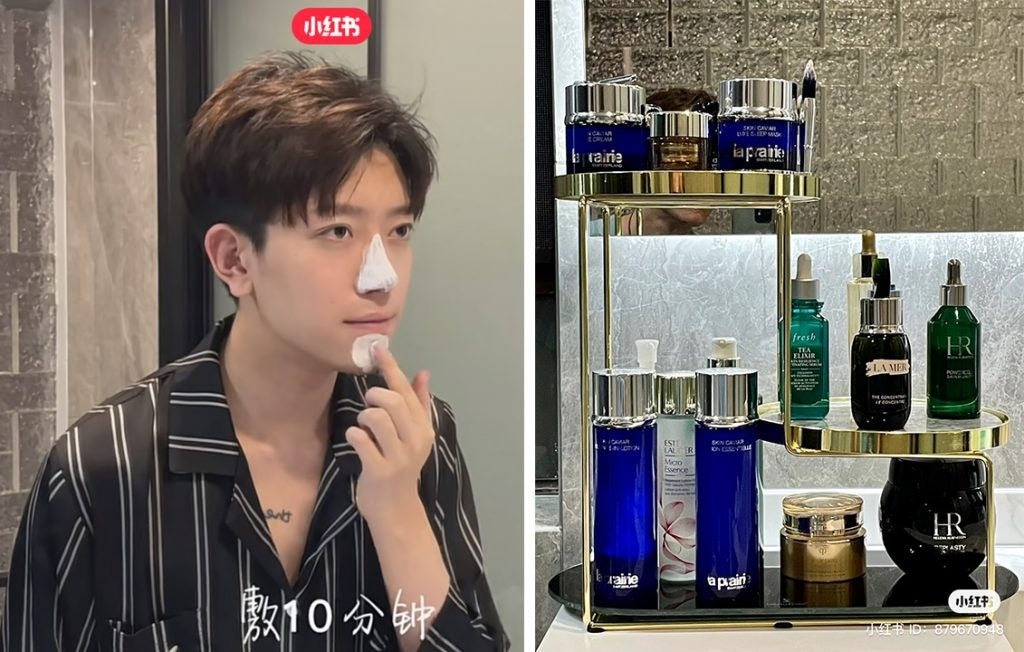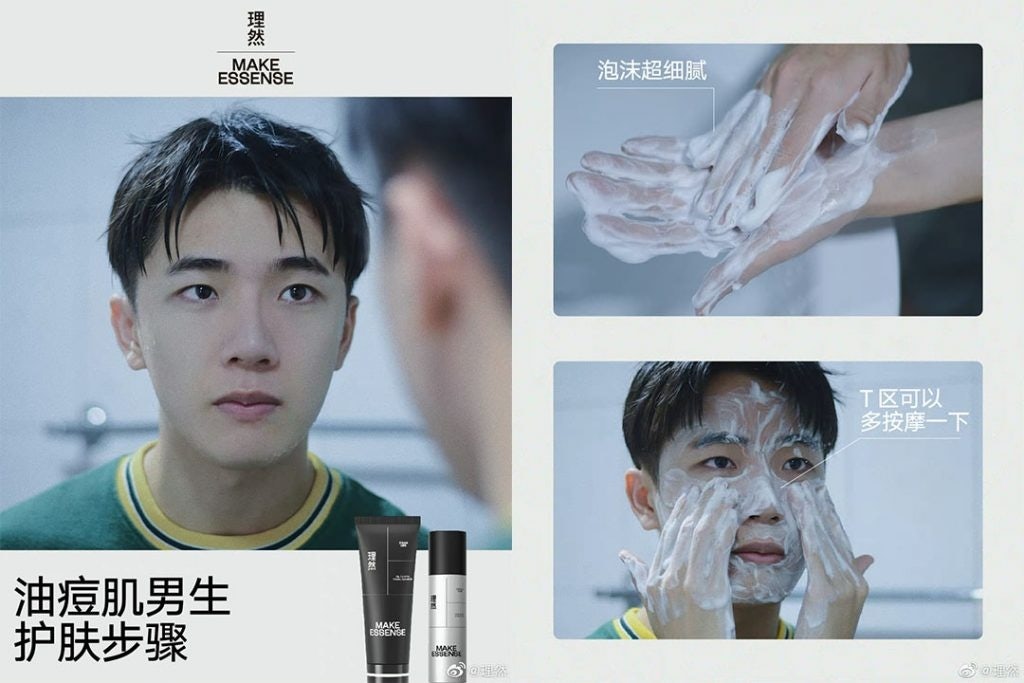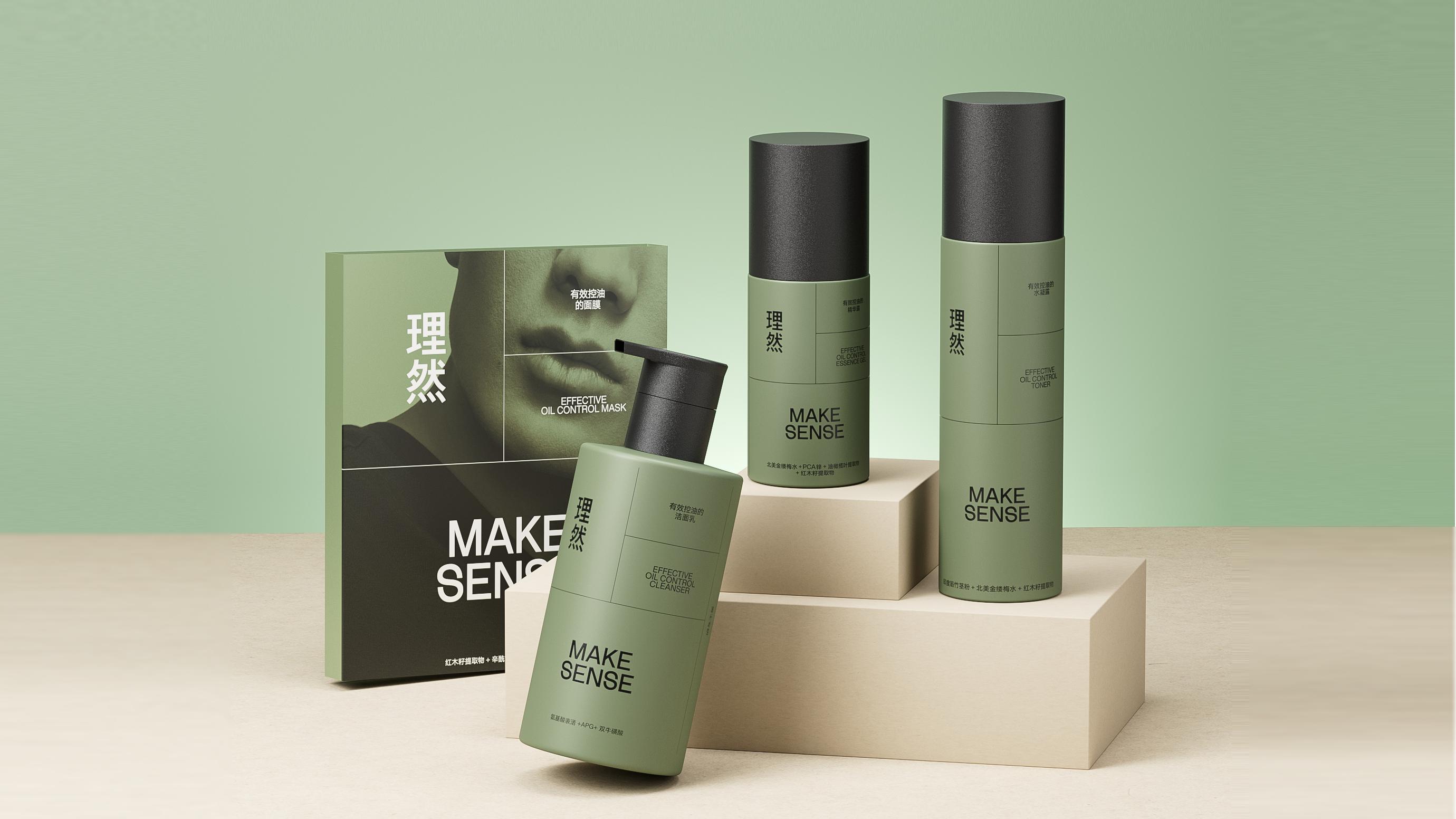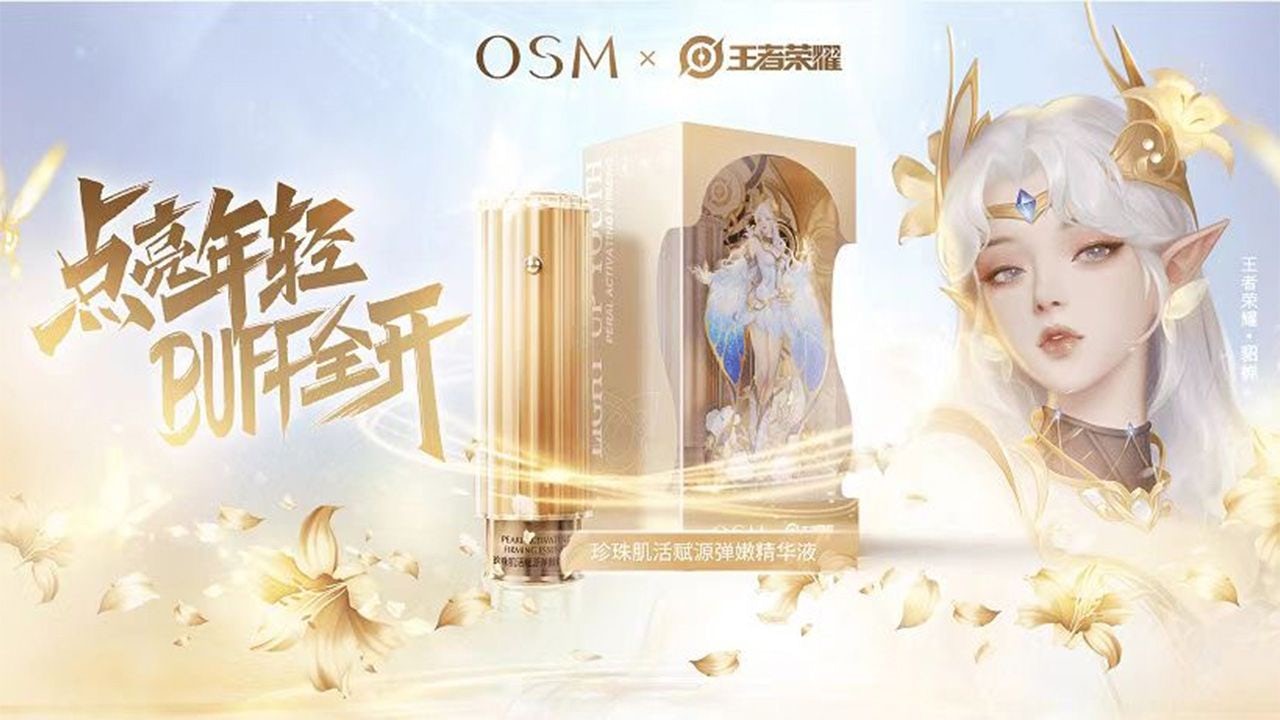Men’s skincare routines are no less sophisticated than women’s. Take 22-year-old college student @你的男友. He regularly shares his daily grooming routine on Xiaohongshu. In the morning, he cleans his face with Clé de Peau Beauté cleansing milk, then massages La Mer’s lotion in small circular motions onto the skin, and lightly taps a few drops of Helena Rubenstein’s serum over his face and neck. Lastly, he smooths La Prairie’s cream with fingertips to hydrate the skin.
The growth of consumers like @你的男友 — and many like him who share similar content on the platform such as @乌鸡gege and @马修日常 — means that for the first time, the market size of men’s skincare products in China is forecasted to exceed the 10 billion mark (68.6 billion RMB) this year. By 2026 it will have doubled. On Xiaohongshu, there were 110,000 posts titled “How To Look Handsome” as of June 2022, and searches for “men’s beauty” increased by 167 percent in the previous two months.

Given the uptick in demand, many global cosmetic behemoths have joined the race. In May, British conglomerate Unilever launched the high-end male beauty line EB39, and Japanese group Shiseido released the men’s skincare brand Sidekick the following month. But they are facing fierce competition from established homegrown players Make Essense 理然 and DearBoyFriend, which are the rising stars in this new field.
Yet the men’s beauty market here only accounts for two percent of women’s — even with this rise. Nevertheless, Lin Lin Jacobs, CEO of the mainland’s largest international beauty exposition CIBE, believes the potential to be huge. As she puts it, “the local 1.4 billion population is half male and female.” Here, Jing Daily analyzes the consumer demographics, current challenges, and viable marketing strategies of the men’s beauty market in China.
Who is buying men’s beauty products?#
Men’s beauty consumers are disproportionately younger than their counterparts among women. According to Xiaohongshu, for men, the demographic aged between 25 and 34 has the highest per capita beauty consumption — a monthly average of more than 220 (1,500 RMB). In particular, the post-95s in top-tier cities are driving the men’s grooming industry accounting for over 46 percent. “The under 34-year-old [men] account for over 70 percent in value contribution versus the 50 percent in women,” said Hwee Chung, head of beauty at Kantar Worldpanel.
Men’s salons are nothing new in the west, but the concept is only starting to take off in China, especially among mature professional men. Firms should not, therefore, neglect the slightly older contingent. “In 2018, there were only 800 male grooming barber shops, now we have 3000. Male consumers from first and second-tier cities usually go there twice a month to have a haircut, shaving, and facial,” CIBE’s Jacobs noted. “The men-only environment makes them feel more comfortable.”
Another demographic that the domestic Chinese men’s beauty label Make Essense (which enjoys over 400 million users) is eyeing is those customers who are yet to be activated. “They are the group of people who are unaware of skincare needs,” affirmed Make Essense founder Huang Weiqiang. Instead of recruiting existing consumers from competing names, another option would be to educate a customer base that didn’t think they would need to apply toners or creams.

Don’t forget women#
Women shoppers’ profiles should also be top of mind for businesses when creating marketing campaigns and promotions. As per Xiaohongshu’s report, 65 percent of the searches related to men’s beauty come from women. “While younger consumers are increasingly making their own product purchases, the senior cohorts largely depend on their female family members’ purchase,” Chung commented.
Women who are partners, siblings, and friends play a crucial role in building men’s beauty routines and consumption habits. The same report indicates that women tend to gift skincare products to men during festive seasons. Many expressed that this was the time they first started testing out beauty products. Men’s beauty businesses should be careful to take this cohort — which exercises a significant influence on men — into account.
How to market a male skincare brand#
Nowadays, young consumers rely heavily on online tools to learn about new fields, products, and companies. Douyin, Xiaohongshu, and Weibo are the search engines who have best capitalized on this cohort. In fact, content creators who are men on Xiaohongshu increased by 82 percent between April 2021 and April 2022.
Lisa Yu, founder of beauty incubator Gēnlab, suggests going even further when seeking to connect with consumers. For instance, she recommends the Xiaohongshu-like app Hupu 虎扑, where men actively share NBA, sneakers, and sports-related content. Financial news outlets are useful too, especially ones whose demographics match 24 to 35-year-old white-collar workers and the over 35s. Collaborations with games such as Honor of Kings or League of Legends are an option too, despite the government’s regulations.
As well as having the correct channel, content must be targeted. In order to promote men-focused beauty labels, communication needs to underline product efficacy. “Men tend to be result-oriented. But once the results are delivered they are very loyal,” remarked CIBE’s Jacobs. Visuals and smell also play a vital role. As Yu explained: “Men don’t want to smell like roses. They want to smell sexy.” And, of course, campaigns targeted to women looking for a gift for men will be another viable option.
Given the sheer number of men in the country — a population of 7 billion — they offer a potential goldmine beyond the saturated women’s skincare market. As Huang observed, “there is no shortage of consumers in China to buy male care products. What is lacking are professional brands and products that are truly developed based on male skin.”


